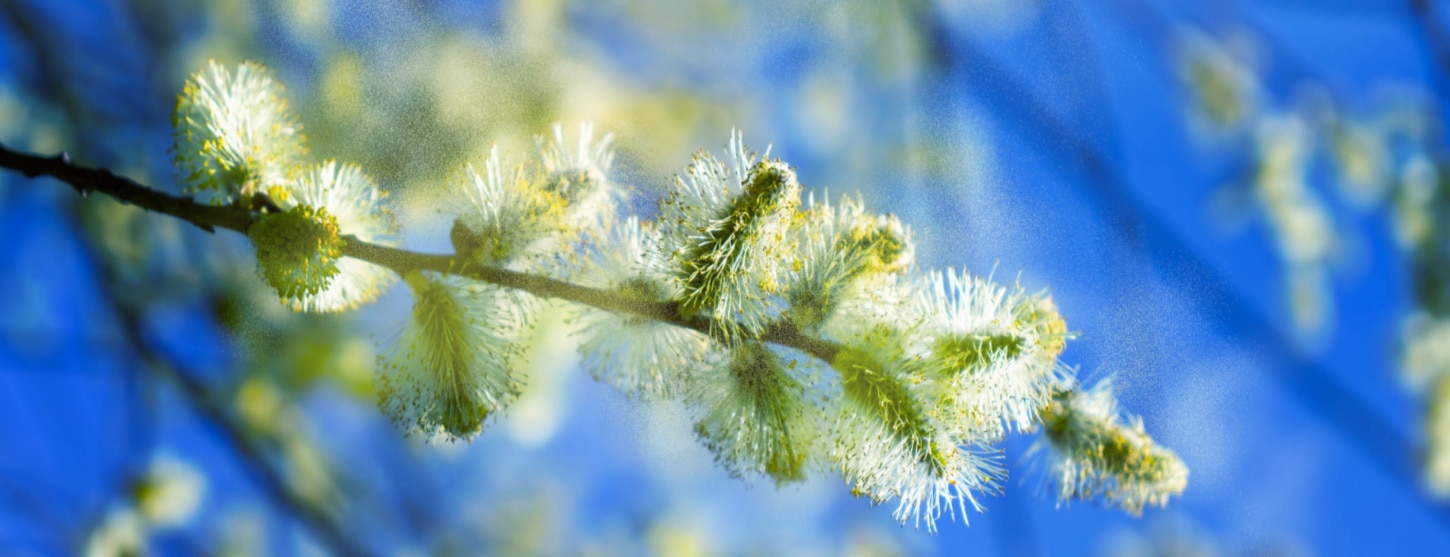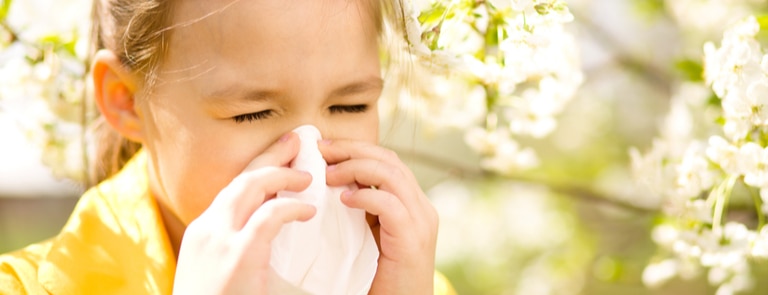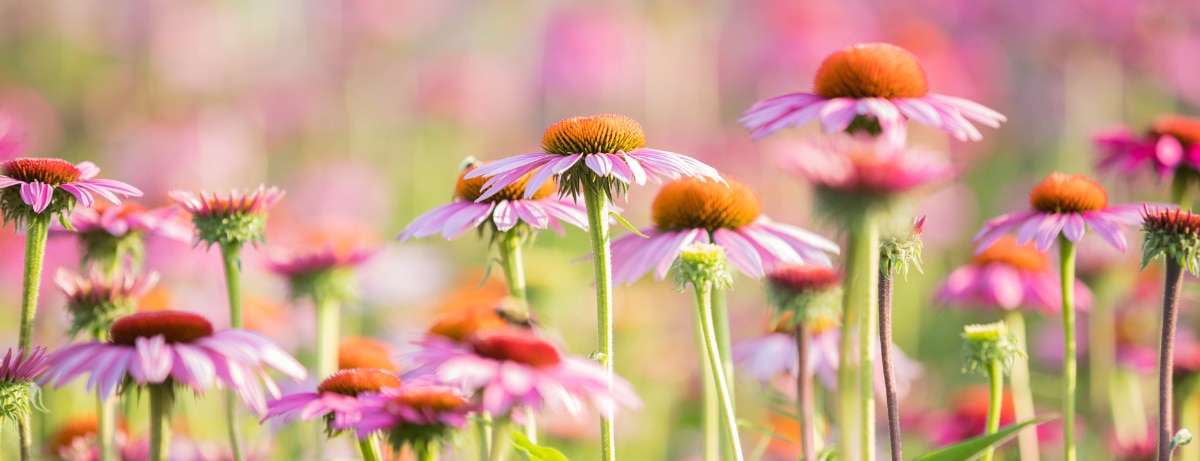10% off £35
UK pollen count calendar

Ever frantically googled, “pollen count today near me” in the hopes to see a low number so you’re not sniffling and sneezing throughout the day?
Be prepared in advance this year, with our help. From tree to bee, check our UK pollen count calendar to see how your hay fever might affect you this month…
What is pollen?
It’s worth knowing what pollen actually is before we dive into the pollen count season by season.
Pollen is described as a mass of microspores in a seed plant, and it looks like a fine dust to the human eye.
Like we learnt in school, pollen is transported by bees, but also by wind, water and other insects too!2
Season by season pollen count
To make things easier for you, we’re going to break things down season by season, and then month by month for a little more detail.
This information is all based on research by the University of Worcester.3
Skip to:
Spring
We’re kicking off our pollen calendar in spring, because this is when things start amping up and you might start experiencing some hay fever related sniffles.
March
The following types could make your symptoms flare up during this month…
Peak pollen:
- Alder – for the whole month
- Hazel – the first half of the month
- Yew – the majority of the month
- Willow – from mid-month to end of the month
- Poplar – the end of the month
- Birch – the very end of the month
General release:
- Ash
- Plane
- Oil seed rape
If it’s weed or grass pollen causing your hay fever, you might not have to reach for your antihistamines just yet.
April
When April rolls around, the following types of pollen are at their peak.
Peak pollen:
- Alder – very start of the month
- Elm – first half of the month
- Willow – first half of the month
- Poplar – the start of the month
- Birch – all month long
- Ash – majority of the month
- Plane – end of the month
- Oak – end of the month
General release:
- Hazel
- Yew
- Pine
- Oil seed rape
May
During May, we start to see a little more weed pollen at its peak…
Peak pollen:
- Birch – first half of the month
- Plane – first half of the month
- Oak – all through the month
- Pine – second half of the month
- Oil seed rape – majority of the month
General release:
- Willow
- Ash
- Grass
- Plantain
- Nettle
- Dock
Summer
And now we move on to summer! Sunshine, good times and… sneezes?
With tree pollen starting to filter out, we see a lot more pollen from weeds during this time of the year.
June
These types of pollen are knocking around during this month…
Peak pollen:
- Oak – start of the month
- Pine – first half of the month
- Lime – end of the month
- Grass – all month long
- Oil seed rape – all month long
- Plantain – majority of the month
- Nettle – very end of the month
- Dock – very end of the month
General release:
- Birch
- Mugwort
July
When July hits, weed pollen takes the reins…
Peak pollen:
- Lime – start of the month
- Grass – all month
- Plantain – start of the month
- Nettle – all month long
- Dock – majority of the month
- Mugwort – very end of the month
General release:
- Pine
- Oil seed rape
August
Thankfully, by August there are only a few types of pollen still circulating…
Peak pollen:
- Nettle – first half of the month
- Mugwort – first half of the month
General release:
- Grass pollen
- Plantain
- Dock
How to fight summer allergies
Suffering from summer allergies & not sure what to do? This article contains lots of practical advice for dealing with allergies. Read on.


Autumn
When the leaves start to turn and you’re met with vibrant orange hues, hay fever season is well and truly on its way out!
September
While the pollen count is significantly lower at this time of the year with no peak pollen culprits, there are still a few pesky types still in the air to know about…
General release:
- Grass – start of the month
- Nettle – majority of the month
- Mugwort – start of the month
October, November & December
This is when the pollen count is at its lowest, so you don’t have to worry about stocking up on hay fever relief products during these months – hurrah!
Winter
When it’s icy out you may not think that pollen could be an issue, but it’s worth noting that some types of pollen starts to be released from as early as January and that winter hay fever is a thing.
January
Christmas is over, you’re getting on with your new year’s resolutions and the trees are starting to get to work on producing pollen…
General release:
- Alder – all month long
- Hazel – second half of the month
- Yew – second half of the month
February
From as early as February, some tree pollen is already in peak season…
Peak pollen:
- Alder – second half of the month
- Hazel – second half of the month
- Yew – second half of the month
General release:
- Elm
- Willow
The final say
If you like to get outdoors a lot and think you may be allergic to a type of pollen, check out our article: Have I Got Hay Fever? Signs and Symptoms.
Last updated: 26 May 2022
- https://www.worcester.ac.uk/about/academic-schools/school-of-science-and-the-environment/science-and-the-environment-research/national-pollen-and-aerobiology-research-unit/pollen-calendar.aspx
- https://www.britannica.com/science/pollen
- https://www.worcester.ac.uk/about/academic-schools/school-of-science-and-the-environment/science-and-the-environment-research/national-pollen-and-aerobiology-research-unit/pollen-calendar.aspx














